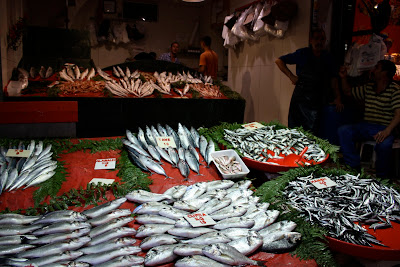Excerpts from the article about the CCA exhibit, Carlo Scarpa, Architect: Intervening with History (1999)
"The CCA exhibit explores the work of Carlo Scarpa: its distinctive approach to contending with the layers of history that mark the fabric of a city and a building. ...he did not treat the found object, ie. the exsisting building, as a frozen entity, but rather as a living fabric onto which to 'collage' the present."
"Scarpa's ability to weave new work into - and out of - the desperate fragments of the old, Carlo Scarpa, Architect: Intervening with History moves beyond the focus on artistry, detail and material. It begins to unravel the complex and sometimes enigmatic symbolic programs that mark Scarpa's work and reveals how we use the irrational - anxiety and uncertainty - to open up architecture's expressive possibilities."
"Scarpa's projects unfold in time, light and space. Faced with the imperative of intervening in the historical fabric of Italian cities, Carlo Scarpa devised symbolic journeys through time and space: uncovering the various layers of a building's past, rediscovering the power of its strongest elements, transferring even its most banal accretions and returning the structure to a vital role in public life, notes Phyllis Lambert, founding Director and Chair of the Board of Trustees of the CCA. He employed contemporary means rather than a repetition of old forms; he accepted and incorporated the commonplace, the damaged, the accidental, as well as the monumental."
"...the deeper significance of his architecture is singular ability to accommodate the structures of the past - is overlooked."
"...Castelvecchio (a municipal art museum in Verona) Scarpa embarked on an intriguing strategy of demolition, change and modification, which allowed each layer of the Castelvecchio's history to come alive and take its place next to the others. Older elements of the building complex were provoked into conversation with wholly intervened new forms, surfaces, textures and motifs. For the Brion Tomb, Scarpa integrated all the concerns of the works that had preceded it. He established a new landscape within an old one, constructed a complex narrative out of startlingly fresh freestanding forms, and explored radical design and construction techniques to effect them."
"These two projects reworked or added to historic structures to accommodate carefully planned visual narratives, in which light, space and structure come into dialogue with works of art."
"Each of Scarpa's later projects seem to be invented de novo. Distinctly new forms and ideas develop to match each new situation, but certain key themes and motifs link them. Among these are the play of levels and the idea of bridging; the use of water and its play with light and shadow and even with the void of the sky itself; an evolving fascination with circular forms; and a return to the sense of architecture as allegory, narrative, and journey."
(Source: http://www.absolutearts.com/artenews/1999/08/06/25764.html)























